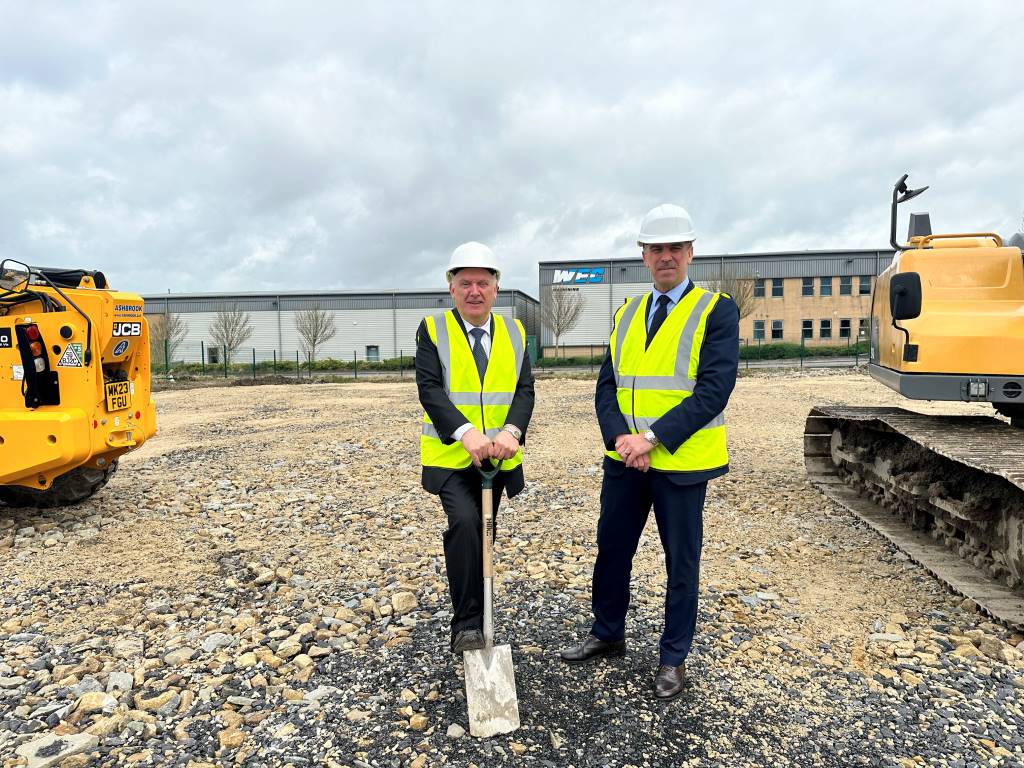Making light work of molybdenum
Specialist manufacturer Cambridge Electron Beam, has purchased a fourth EDM machine from Sodi-Tech EDM.
Specialist manufacturer Cambridge Electron Beam, which already has three Sodick wire EDMs, has installed a new machine capable of handing workpieces up to 1,220mm x 915mm x 405mm. Purchased from Sodi-Tech EDM, the intention is to cut cycle times by 50% when producing large heater parts for Metallic Organic Chemical Vapour Deposition (MOCVD) machines.
MOCVD is used to produce photonic devices by depositing very thin layers of chemicals on wafer substrates, which are then used in devices such as solar cells, laser diodes, LEDs and VCSEL lasers. Final applications for the technology are in the manufacture of consumer electronic products such televisions, DVD players and mobile phones.
The father and son company was originally established in 1974 as a welding subcontractor specialising in electron beam technology, but diversification into the manufacture of heaters for MOCVD machines has proved to be very successful for the business.
“The heaters are used to grow gallium nitride (GaN), which produces blue lasers for reading DVDs, for example – hence the term ‘Blu-ray' technology,” explains company founder Tim Burns.
Many of the components for MOCVD heaters demand the generation of complex forms in exotic materials such as molybdenum and tungsten. Such materials would prove challenging for conventional metalcutting operations, hence the successful application of EDM technology is vital to the ongoing success of Cambridge Electron Beam.
“Because the heaters in MOCVD machines experience temperatures of around 1,700°C, molybdenum is the most commonly specified material, although some tungsten is used on smaller components,” says Mr Burns. “The abrasive nature of molybdenum means that machining using conventional metalcutting technologies is problematic, with EDM offering a far easier and more cost-effective manufacturing method.”
Although already operating three Sodick wire EDMs, the company was lacking the capacity to produce molybdenum heater parts such as annular rings above 500mm in diameter.
“It is possible to make these parts on our smaller Sodick models, but it means doing a partial cut, turning it round and bolting it back down,” Mr Burns reveals. “We have to do this four times to achieve a finished component, whereas using our new Sodick AQ900 means we can produce the rings in a single hit in a total cycle time that is at least half of what it was previously.”
~
The Sodick AQ900 CNC wire EDM with built-in automatic wire threading technology features XYZ axis travels of 915mm x 610mm x 405mm, and UV axis travel of 935mm by 630mm. It can accommodate workpieces measuring up to 1,220mm x 915mm x 405mm and weighing up to 2,000kg. There are three chief component parts to each MOCVD heater: a cam-shaped centre section and two annular rings. Essentially the sections start life as a single square plate. Once the wire start-holes have been produced, the molybdenum plate is loaded on to a suitable Sodick machine (depending on the diameter), which proceeds to profile the three shapes. Batch sizes are typically around five-off, although 20 or 30-off is not uncommon.
Demand is growing as the applications for MOCVD continue to broaden. According to Mr Burns, the optoelectronic properties of GaN – described by some as the most important material since silicon – can also produce the white light needed for LEDs anticipated to replace domestic lighting bulbs in the not too distant future.
Elsewhere, other companies are exploring the possibilities of using GaN to fuel ‘deep UV' LEDs that could be used for solar powered water purifying lasers, a development with the potential to transform living conditions in the developing world for millions of people.
In line with these trends, the lifetime of the heaters used within MOCVD machines has been increased to around 8,000 hours – a four-fold improvement over recent iterations. Cambridge Electron Beam finds itself among only a handful of companies with the necessary experience and manufacturing technology capable of meeting rising demand in this innovative new sector.
Sodi-Tech
www.sodi-techedm.co.uk














